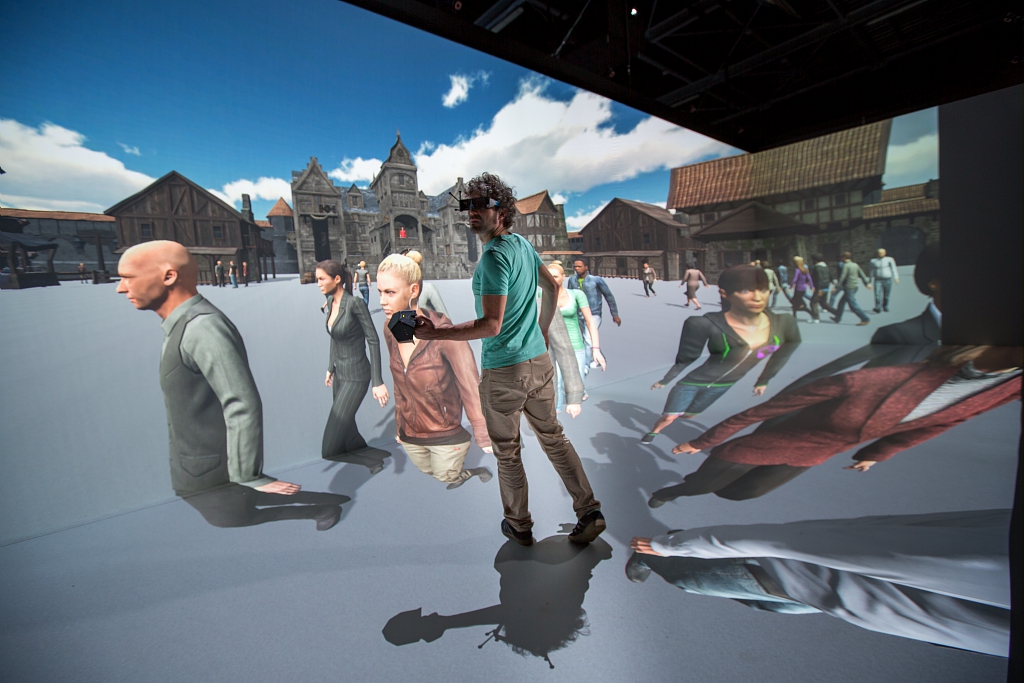How our Perception of Virtual Humans is Influenced by the Way They Move
Date:
Changed on 29/09/2022

A scientist at Inria, the French institute for computer science, Katja Zibrek, has been granted a Marie Skłodowska-Curie Actions fellowship to explore how motion actually influences our perception of realistic virtual humans.
“When it comes to realistic characters in virtual environments, people in our community often focus on how to portray facial motions that will look natural. But they tend not to pay too much attention to the motion of the whole body. And that's what I focus on, because I have the feeling that the topic is not being explored enough,” sums up Katja Zibrek, a member of the VirtUS research project-team at Inria, in Rennes, Brittany, France. With a double background in computer science and psychology, she studies how appearance realism of virtual characters guides the perception and behavior of the viewer. She was recently granted a MSCA individual fellowship for a two-year project named ForEVR whose purpose is precisely to further investigate the appeal of character motion.
The Marie Skłodowska Curie Act (MSCA) is the European Union's reference program for doctoral and postdoctoral training of researchers.
Inria offers numerous opportunities and dedicated support to host, in its 9 centers, male and female postdocs within the framework of this program.
► Learn more about the MSCA
“We have some idea of what an appealing motion would be. We know from previous research that it affects how people behave. It is a very strong signifier. But we don't understand it very well. It is not something that is being much talked about. Probably because it is very difficult to quantify.”
Hence the need to develop methods and measures that could reliably quantify the motion changes. “For instance, if we apply a change to a character, would people react to that? Would they even notice the change? These metrics should be one of the major outputs of this project.”
The main challenge, though, will be to “get to the point where we could change the motion in a meaningful fashion so that people would perceive it the way we want. We seek to create motions that would exhibit different qualities.”
At the end of the day, it would be like having motion filters that convey a whole gamut of emotional states of mind. “You record one motion which is natural. Then you apply the algorithm and you change this motion in a way, let's say, more neurotic. The character is now perceived as having another personality. And that is very useful because for doing so, you don't have to record many motions. You just need to record one that you can then modify.”
Icing on the cake: this modification could even be ùade in real time. In practical terms, such a technology could help many researchers from various fields who can't easily access a good
― and costly ― motion capture system.
The algorithms that are expected to come out of this research will be transfered to Virtual Bodyworks. A spin-off of Barcelona University, this company specializes in immersive environments focused on medical and psychological rehabilitation. One of their innovative protocols leverage VR for the rehabilitation of convicted perpetrators of domestic violence. “Abusers are put in the shoes of a woman being harassed or assaulted by a man. So they can experience how it actually feels like being at the receiving end of such abuse. The purpose is to enhance their empathy for victims.” This clinical research has been funded through several European projects in recent years, including VR per GENERE. Ongoing experiments are conducted by Barcelona’s Hospital Clínic in conjunction with the Catalan justice department. “More broadly speaking, embodiment techniques are being increasingly considered for treating a variety of mental health disorders. It could help raise people's self confidence, for instance.” Another initiative of interest in this context is Socratres a VR platform that exploits embodiment to treat obesity.
Titre
Image

Verbatim
Until now, I have always worked as part a team. It's the first time that I conduct research on my own. It's my project, my responsibility. I also have responsibility toward a student. But after all, empowering young researchers is precisely what a Marie Skłodowska-Curie Actions fellowship is about.
Auteur
Poste
ForEVR project leader